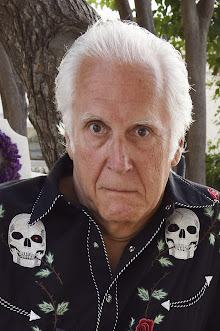It's always a delight, here on Murder is Everywhere, to receive guest author Jim Benn. Jim, now writing full-time after thirty-plus years in the library and technology businesses, is the author of the Billy Boyle series, published by by Soho Press.
DEATH'S DOOR is his latest, and a cracker-jack book it is too.
In it, Benn continues Billy's adventures as a World War Two grunt, dropping him down, this time, in Rome in 1944. The eighth opus, tentatively titled ANGRY SMITH, is the next one up.
But you going to have to wait until 2013 to read that one.
Jim is also the author of two excellent standalones, ON DESPERATE GROUND and SOUVENIR, available exclusively in ebook form.
He lives in Hadlyme, Connecticut, with his wife Deborah Mandel.
Leighton - Monday
GOLFING
FOR CATS
In 1976 I was working as a public library director and enthralled
with my new duties as acquisitions librarian, as well as chief custodian and
handyman. Even though the town was small and the pay even smaller, it was
heaven for a liberal studies major. I got to buy books, for crying out
loud!
I recall reading a review about a book of short stories by Alan
Coren, an editor at Punch magazine. He had determined that the most popular
books of the day were about golf, cats, and Nazis. He also thought that authors
should stop whining about lack of support from their publishers and help
promote their books in new and creative ways. To that end, he titled his rather
thin (160 pages) book Golfing For Cats. The bold red cover
had nothing but a huge swastika on it.
I loved the concept and bought two copies for the library.
Apparently few others shared my enthusiasm. Perhaps the fact that there was no
golf, not a single cat or even a mention of Adolf created confusion for the
book-buying public. Still, I always remembered this cheeky bit of attempted
author marketing fondly, hoping one day I could also write a book about
cat-loving Nazi golfers.
This year, with the upcoming publication of the seventh Billy
Boyle novel (Death’s Door -- pictured above) I finally had my chance to score one out of three
of Coren’s sure-fire cover strategies. This book is set within Nazi-occupied
Rome, where Billy is sent disguised as a priest, to investigate the murder of
an American monsignor within neutral Vatican territory. There is a scene set in
Piazza Navona, near Bernini’s famous sculpture Fontana dei
Quattro Fiumi or Fountain of the Four Rivers.
Billy, in his priestly garb, is being observed by a German officer. I was
entranced by the figure in the sculpture representing the Nile River, with a
cloth pulled over his eyes symbolizing the unknown source of the river. It
seemed the perfect image for a mystery, the journey toward the unknown.
The
Nazis, of course, were fond of their swastika symbol, and it is an easy matter
to find images of the red banners hung from buildings throughout occupied
Europe. So the Piazza Navona scene with a red banner was proposed to the
artist, who put together a quick sketch.
I liked
it immediately. My small homage to Alan Coren actually worked as a cover image.
The final (or so I thought) color image was striking.
Everyone
was happy.
Except
for the sales representatives, who said the swastika had to go. Apparently German and Austrian laws make the public
showing of the Hakenkreuz (swastika) and other Nazi symbols illegal. The
same is true of Poland, Lithuania, Hungary and Brazil, and the European Union
as a whole has drafted similar laws, none of which have yet passed. Alan Coren
never had to worry about online images showing up on Amazon in 1976. So the
advance reading copies went to print with an empty red banner, which was fine,
but we needed to put some kind of image there. Who would hang a plain red
banner in Piazza Navona?
With the
publication date not too far off, this was the artwork designed to fill in the
banner:
This attempt
looked more like the eagle from the Polish national coat of arms. Oops. Since
Poland had not conquered Rome, I resent the image for the Italian Army Eagle.
Almost there.
Except this eagle looked a little bit like a chicken, maybe a roaster with
yummy drumsticks.
With a bit of artistic tweeking, the roaster became
an actual Fascist emblem, and the banner came alive.
The odd thing is
that one of the characters in the book is Monsignor Hugh
O'Flaherty, a real-life Irish priest who saved the lives of thousands by hiding
escaped POWs, Jews and Italian anti-fascists within the Vatican and throughout
Rome. He’s worth a Google search. Before the war, he had engaged in his hobby
whenever he could. Can you guess what it was?
Yup.
And this last photo is one of the gentleman himself.
































